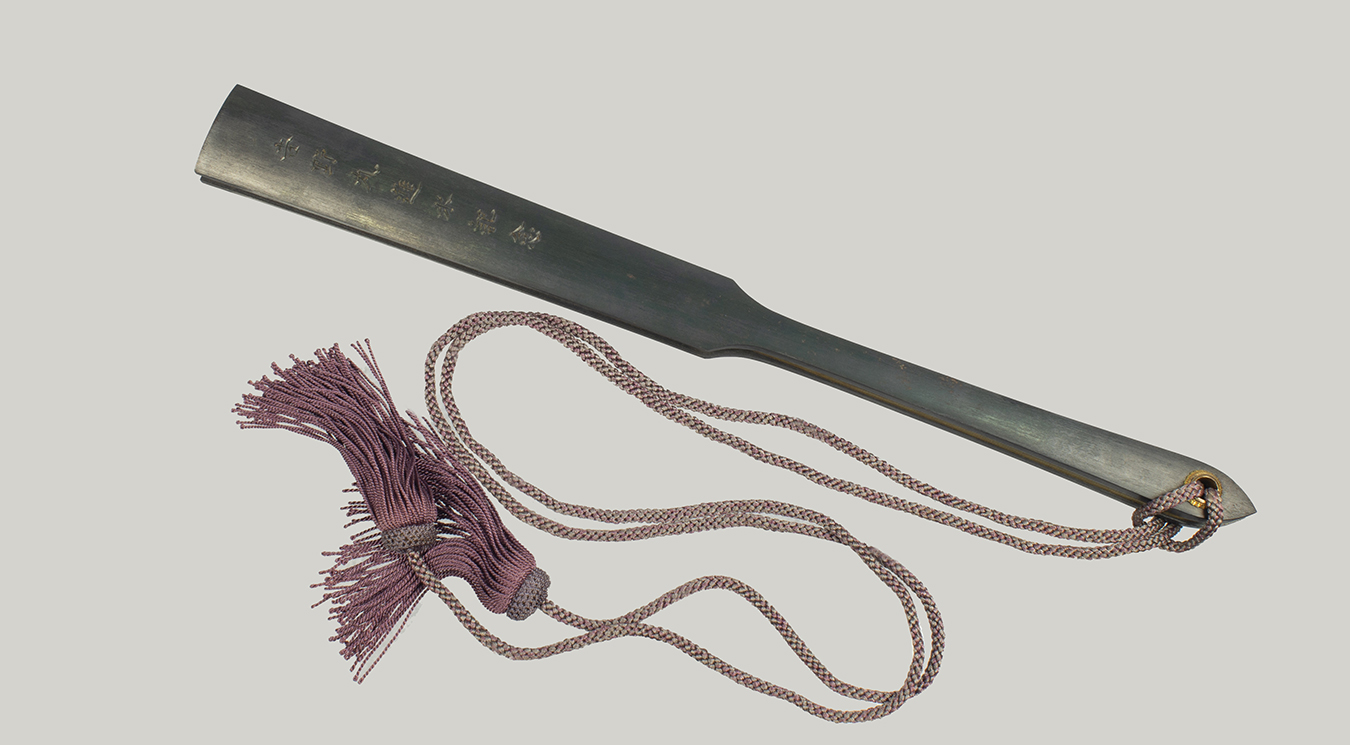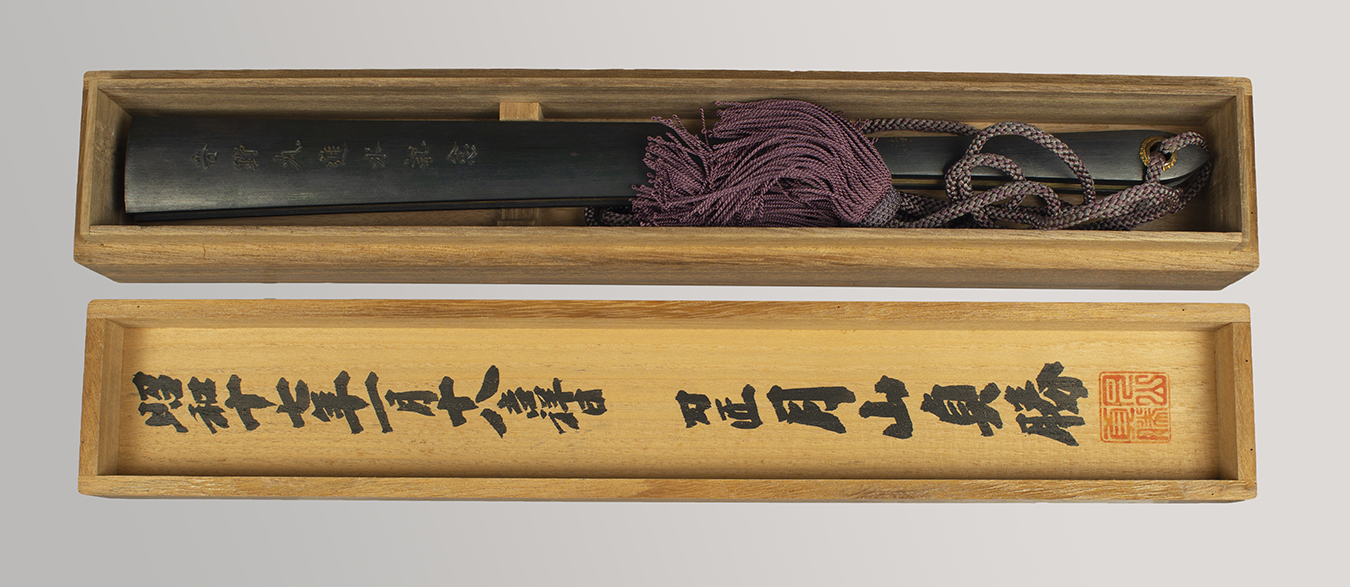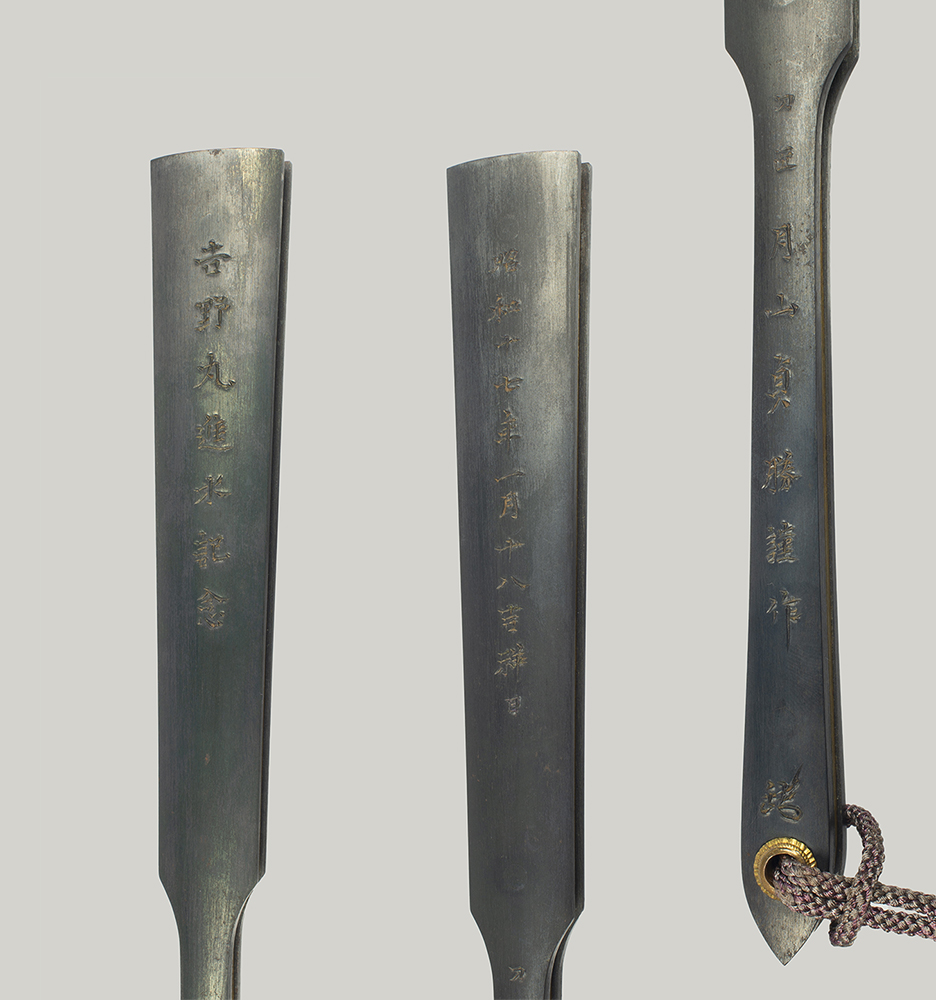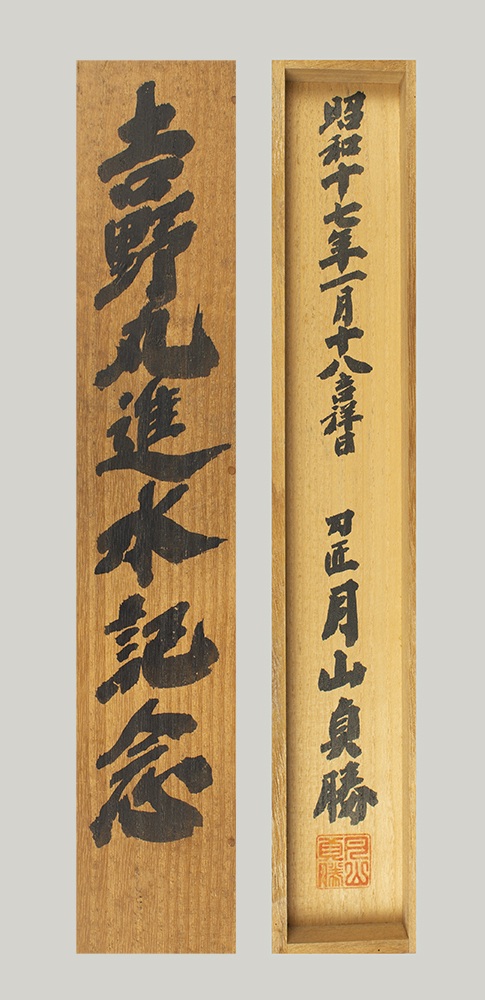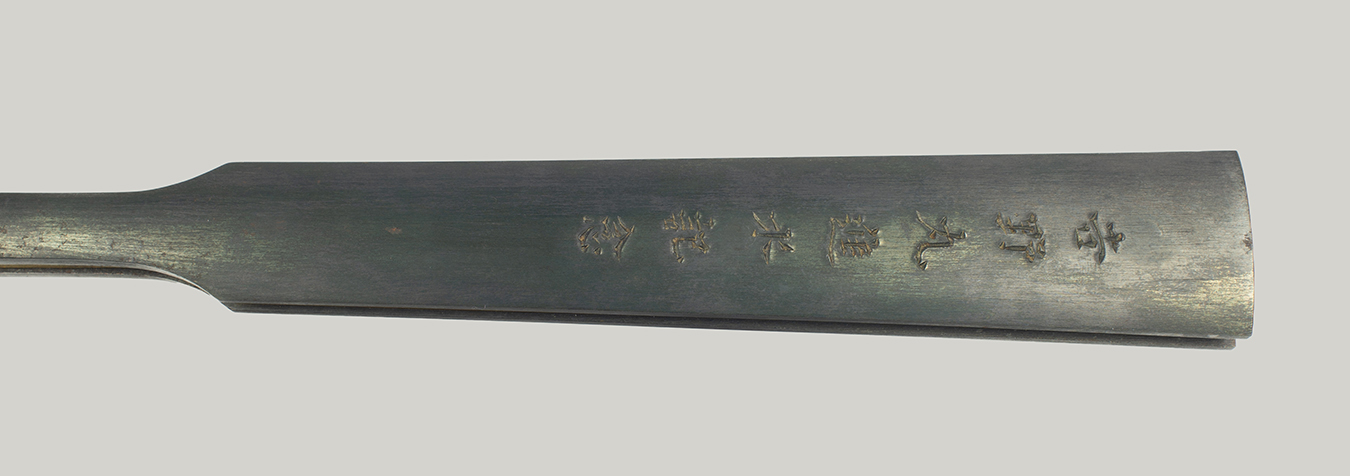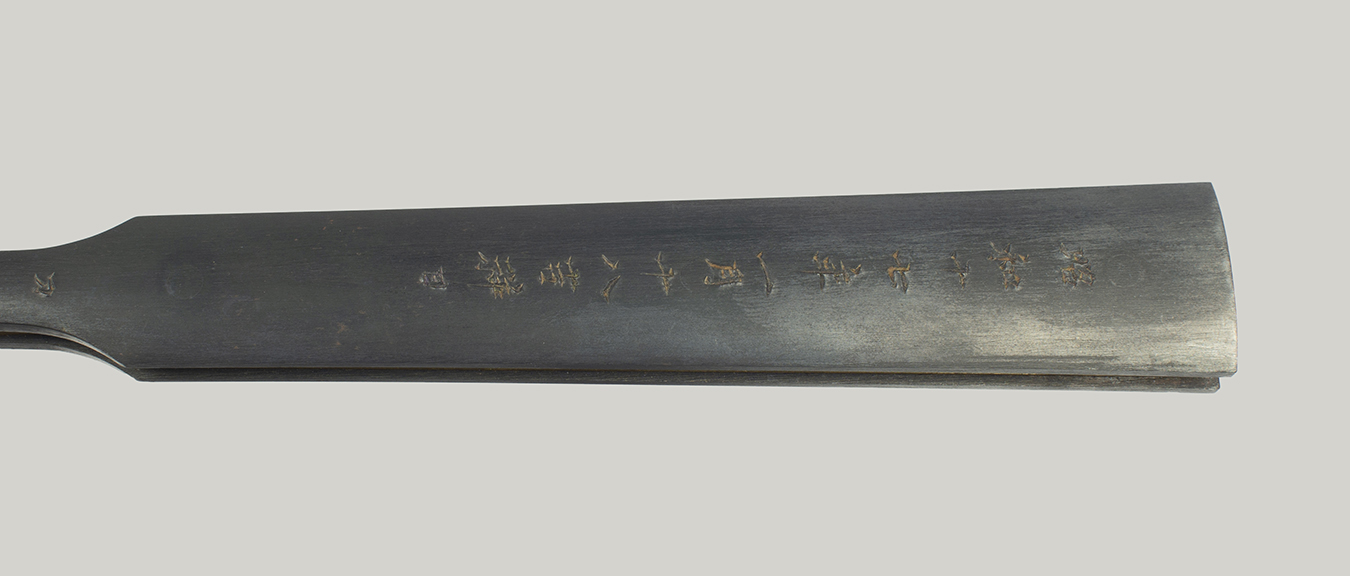鉄扇月山貞勝
Gassan Sadakatsu Tessen
Iron and Brass War Fan
Commemorating the Yoshino Maru entering the water in Showa 17 (1942)
吉野丸進水紀念
Dimensions: 36 cm x 3.5 cm x 1.8 cm
This is a tessen or "war fan" made by Gassan Sadakatsu commemorating the Yoshino Maru (a Navy Ship) entering the water on January 18th 1942 (Showa 17). The Gassan family is one of the most famous among Gendaito schools. They worked in Osaka and products of this school are highly regarded for the quality of their work and many important awards and achievements. Gassan Sadakazu was the father of Gassan Sadakatsu and became an Imperial Court Artisan in 1906. Gassan Sadakastu made daisaku for his father in the beginning of his career. In 1917, Sadakatsu made a tachi for the future Emperor. In 1927 he forged a katana and a mamorigatana (a small tanto to be kept at one's side) for the Emperor. He was purveyor to the imperial household and made swords for dignitaries, high ranking officers and also for dedication to the Ise-Jingu shrine. He passed away on Dec 24th, 1943 at the age of 74. This tessen is fully singend by Sadakatsu with further inscription by him commemorating the Yoshino Maru entering the water and dated January 18th, 1942 on a "lucky day". The original kiri-bako accompanies the tessen. It has hako-gaki by Sadakatsu and bears his seal. There are slots in the bottom of the box for sanada himo ribbon ties but none are present.
A tessen is a folding fan made of heavy plates of iron and in this case, brass. They were designed to look like a normal, harmless folding fans. In the Edo period, a Samurai could take these to places where swords or other weapons were not allowed. Some swordsmanship schools even included training in the use of the tessen as a weapon. The tessen was also used to parry attacks and as a throwing weapon. The creation of a tessen for an important military event in the 1940s would have had a ceremonial purpose in tying the power of the Japanese Navy to the Samurai of the past.
The history of the Yoshino Maru is rather interesting as the ship had a long service life and eventually met a grim fate. It was built in Germany in 1907 and named the Kleist.
Then it was claimed by the United Kingdom as a war reparation in 1919. The British sold it to Japan in 1921 and she was named the "Yoshino Maru" . The ship was used as an ocean liner but then requisitioned as a transport (postal) ship by the Japanese Navy at the start of the second Shino-Japanese War.
In December of 1941 this ship was re-purposed again as a troop transport vessel. The occasion that this tessen probably coincides with would have been the completion of refitting the ship for that purpose. Ceremony held on Jan 18th 1942 when she was put back in the water.
On July 31st, 1944, the Yoshino Maru was travelling in a convoy with 5,063 soldiers on board. The convoy was attacked by a United States Navy submarines. The USS Parche sank the Yoshino Maru with four torpedoes. The losses included 2,442 soldiers, 18 gunners, 35 crewmen, and 400 cubic meters of ammunition.
A finely crafted tessen by Gassan Sadakatsu made in the twilight of his life. The occasion of the tessen and its connection to WWII, the Yoshino Maru and the fate of thousands of men makes this a fascinating militaira artifact.
SOLD
nihontocraft@bellsouth.net
